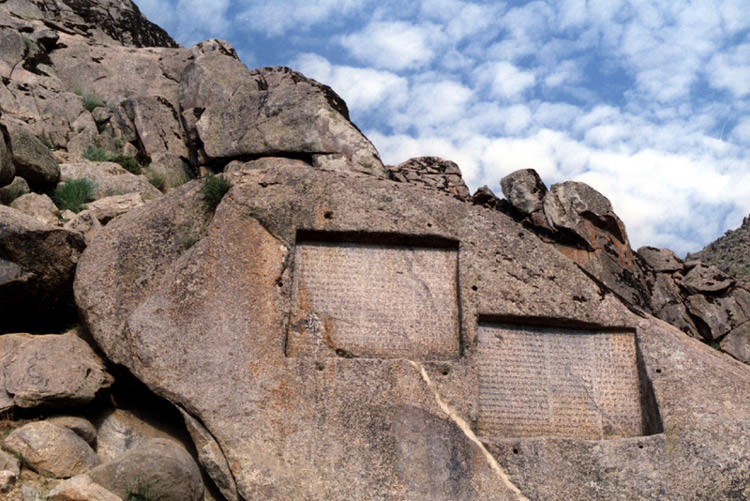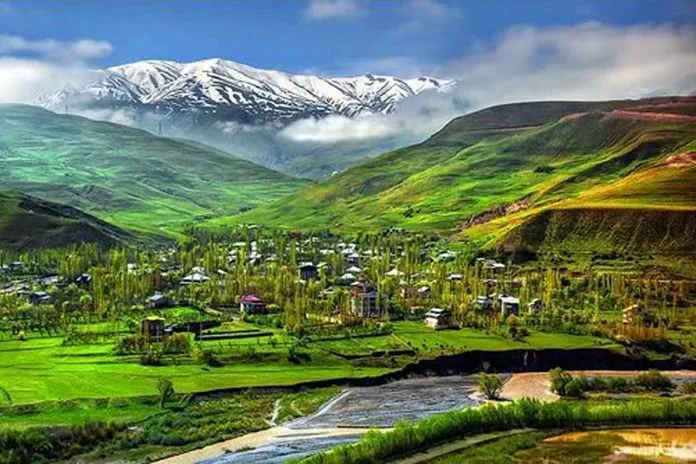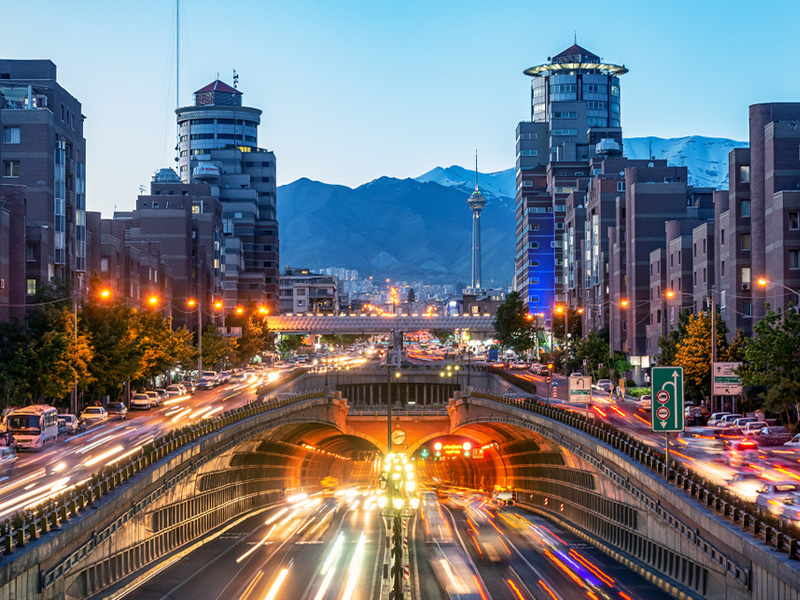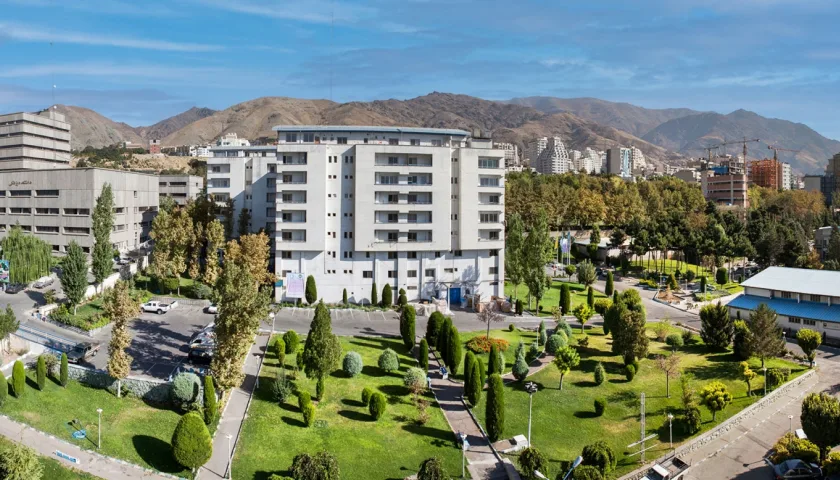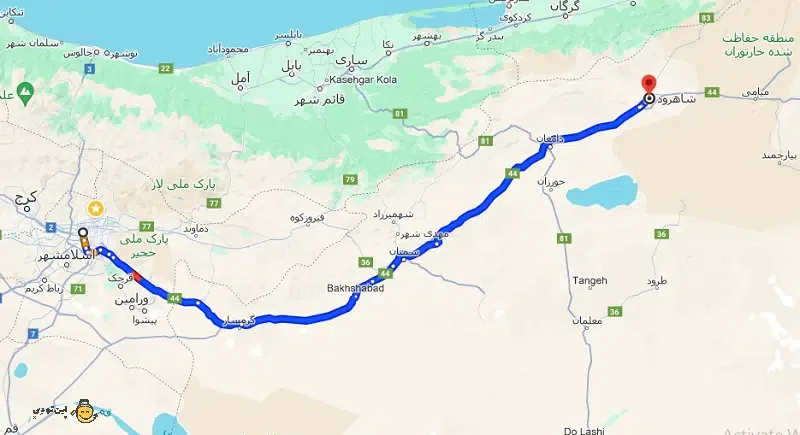Must-See Attractions in Hamadan
You may be familiar with Hamadan, or perhaps only acquainted with some of its attractions. This city is situated in the mountainous regions of western Iran, nestled in the foothills of Mount Alvand, and is one of the cool-weather cities in the country. Now, let’s take a unique journey through the city of Hamadan and introduce you to some lesser-known attractions. Hamadan is the city with the famous Ali Sadr Cave, attracting numerous domestic and international tourists annually.In this article, join us as we introduce the attractions in Hamedan for you.
Discover and Experience the Attractions of Hamadan
The attractions of Hamadan present a unique world to explore, filled with beauty preserved through history or crafted with skillful artistry by the hands of nature. Every part of the city, like other Iranian cities, is remarkably beautiful and captivating. These attractions invite us to witness and touch the remnants of history or the masterpieces shaped by the skilled hands of nature. Join us on an unforgettable journey to explore the enchanting and memorable sites of Hamadan. If you’re ready, let’s embark on this adventure together.
Ali Sadr Cave
Ali Sadr Cave, the world’s longest water cave, is a captivating and memorable destination for tourists in Hamadan. Located in the Sar-e Qaieh mountains near the village of Ali Sadr in Kabudrahang County, the cave features winding passages and numerous chambers. Visitors can explore the cave by boat, and the constant temperature inside is a pleasant 20 degrees Celsius. Recognized as the 23rd national natural heritage site, Ali Sadr Cave is open from 8 am to 5 pm in the first six months of the year.
Ali Sadr Cave, located in Hamedan, is a natural wonder and one of the attractions of the region. Formerly known as “Ali Sard” or “Ali Sed,” the name was mistakenly changed to “Ali Sadr” when, in 1350 (1971), the local villagers who owned the land around the cave took charge of the road signage. Since then, the cave has been officially recognized as Ali Sadr.
Remarkably, Ali Sadr Cave is Iran’s only water and boating cave, boasting the world’s longest underground boating route. It is also considered one of the largest caves, dating back to the Jurassic period. Exploring Ali Sadr Cave means embarking on a journey into the mesmerizing depths of the Earth, navigating through narrow and winding passages adorned with diverse rock formations. Notably, the cave is filled with chambers, each with its unique features and characteristics.
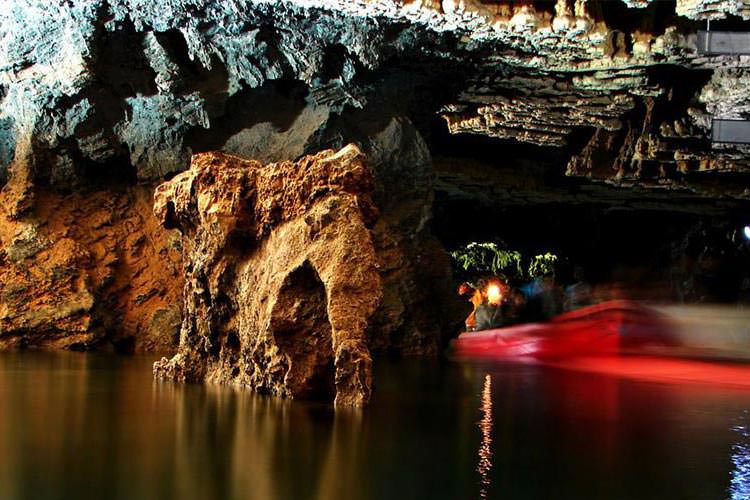
Akbatan Lake and Dam
Situated 11 kilometers east of Hamadan, Akbatan Lake is the city’s only lake. With its green surroundings and recreational facilities, the lake attracts many travelers. Water sports such as boating and water skiing are popular activities at Akbatan Lake. The area also offers amenities like restaurants and guesthouses for the comfort of visitors.
Ganjnameh Tourist Recreational Village
Ganjnameh is a recreational, tourist, and sports complex located in the Ganjnameh Square, five kilometers west of Hamadan, near the Alvand Mountains. The mountainous climate, the delightful Alvand Valley, and the beautiful views of the Misan Plain make this complex appealing to both domestic and international tourists. Ganjnameh includes various tourist attractions, requiring a full day to explore fully.
Within this village, visitors can marvel at the Ganjnameh inscriptions and Ganjnameh Waterfall. The Ganjnameh Cable Car, Dark-Dare Ski Resort, cable car, and ski slopes, balance aerobics in the western part of the Ganjnameh complex, a 200-meter suspension bridge, Tyrolean or individual cable flight over a 520-meter distance, and many other recreational activities are available to experience.
Baba Taher Oryan Mausoleum
The mausoleum of Baba Taher Oryan, an Iranian mystic, poet, and composer of couplets from the late 4th and mid-5th centuries, is located in Hamadan. This monument, situated in a square of the same name in the north of Hamadan, was registered as a national monument of Iran in 1997. The interior of the mausoleum features intricate mosaic work, creating a unique atmosphere. Baba Taher’s poems, written in the Malayeri dialect or another Luri dialect, adorn 24 beautiful stones within the mausoleum. The mausoleum is open for visits from 9 am to 9 pm in spring and summer and from 9 am to 5 pm in autumn and winter. Next to the mausoleum, there is the Handicrafts Museum of Hamadan, which visitors can explore.
These attractions showcase the rich history and natural beauty of Hamadan, making it a destination worth exploring for travelers seeking a diverse and enriching experience.
Avicenna Mausoleum
The mausoleum of Avicenna, the renowned Iranian physician, poet, and mystic with global recognition, is situated in a square of the same name. The oval-shaped square, adorned with ancient plane trees and inspired by Iranian gardens, creates a beautiful recreational space. The architectural design is inspired by the Qabus ibn Wushmagir Tower in Gonbad-e Kavus city. The southern hall of the mausoleum houses a collection of coins, pottery, and artifacts dating back to pre-Millennium periods. In the northern hall, a precious collection of Avicenna’s handwritten books and works is displayed.
Hegmataneh Mound
Hamadan, the ancient city that was once the first capital of Iran, has stood the test of time, remaining alive and significant alongside Athens in Greece and Rome in Italy. Herodotus credited the construction of this city to Diako and mentioned its seven walls, each painted in the color of a planet. Recent archaeological excavations at the Hegmataneh Mound have revealed that the magnificent palaces of this ancient region were located in the current Hegmataneh Mound. Noteworthy is the well-organized and advanced water supply system of this ancient city.
Gonbad Alavian
Among the well-preserved examples of Islamic-era architecture, Gonbad Alavian is a unique and exceptional piece of Iranian architecture. Situated in the vicinity of Alavian Gardens near Imamzadeh Abdullah Square in Hamadan, this domed structure features beautiful brickwork. It is recognized as one of the masterpieces of post-Islamic architecture in Hamadan and was registered as national heritage No. 94 on October 15, 1931.
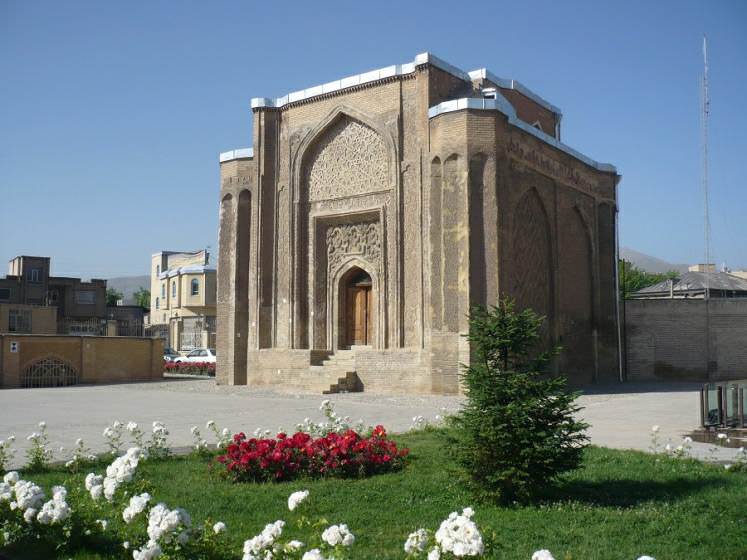
Imamzadeh Hussein
Imamzadeh Hussein, also known as Shahzadeh Hussein, is located at the beginning of Shahid Street in Hamadan. This shrine is an outstanding architectural gem in Hamadan, characterized by a beautiful brick dome. The northern building serves as a tomb, featuring a small courtyard, an entrance, and two shrines with cross-shaped plans. The entrance facade is two stories high, and each floor contains chambers. The interior of the dome and the exquisite wooden cenotaph create a magnificent structure.
Traditional Bazaar of Hamadan
The historical complex of Hamadan’s bazaar is situated in the Babataher, Akbatan, and Shahada streets and mainly belongs to the Qajar era. Like most traditional markets in ancient Iranian cities, Hamadan’s traditional bazaar is covered, with some sections featuring a vaulted roof. The market is architecturally unique, with specific lanes designated for different trades. Some historians attribute the history of this market to the Samanids, while most of the remaining structures date back to the Qajar period.
Qorban Tower
Qorban Tower is a historical structure from the 7th or 8th century located between the Four Gardens of Shahid Modarres and Taleghani Street, next to the Ibn Sina High School in Hamadan. This building is the resting place of Hasan ibn Attar Hafez Abu al-Ala Hamadani and Seljuk commanders.
The reason behind naming this building Qorban Tower is said to be associated with a person named Qorban during the Afghan uprising in the Safavid era. He defended against the rebels and tried to repel them. For this reason, the mosque and shrine became known by his name.
This tower was registered as a historical and national monument in Iran on June 17, 1975.
Historical Castle Bath
The Castle Bath, as implied by its name, is a traditional bathhouse in Hamadan. This bathhouse is located in one of the old and authentic neighborhoods of Hamadan called Ghazaltrashan or Qaleh neighborhood, on Shariati Street. The Castle Bath dates back to the Qajar period and has an area of about 1500 square meters.
The Castle Bath consists of two sections, cold and hot, with an octagonal entrance. After passing through the octagonal area, the cold bath and then the hot bath are arranged. This bathhouse had separate sections for men and women.
In 2008, the historical Castle Bath underwent restoration and renovation. After that, it changed its usage and now serves as the Museum of Anthropology in Hamadan, welcoming tourists and enthusiasts. Inside the bathhouse, a traditional tearoom has been set up where musical groups perform various programs.

Hamadan Museum of Natural History
Located at the end of the Four Gardens of Azadegan in Hamadan, the Hamadan Museum of Natural History is housed in an area of approximately 2000 square meters. Founded by Jafar Mohammad Alizadeh, this museum showcases a unique collection of various animal, plant, and natural species related to the climate of Iran and the world. It serves as a valuable asset for researchers and scholars to study and explore.
This museum, situated within the Faculty of Agriculture, houses a rare collection of living specimens, fossils, and taxidermy of different animal species.
Stone Lion
The Stone Lion complex is located at the end of the 12-meter street in the eastern part of Hamadan. This stone statue, consisting of two parts, one of which was placed at the Bab Al-Asad gate during the Arab attack, is known as the Lion Gate. Part of this area is buried under residential buildings, and another part has been transformed into a square. An extensive graveyard from the Parthian era with clay coffins and various burial styles has been discovered here. The antiquity of this site is attributed to various historical periods, but some consider it to be Median. However, given the Parthian coffins found, it is evident that this site belongs to the Parthian period. This site was registered as a national monument in 1931.
Aref Ghazvini Mausoleum
Abolqasem Aref Ghazvini was one of the poets and composers of the Constitutional era in Iran. He was born in Qazvin in 1880. His tomb is in Hamadan, on Buali Street, within the Buali Ibn Sina Mausoleum.
Jameh Mosque
Jameh Mosque of Hamadan is considered one of the Qajar era structures in the city, with inscriptions dating back to the years 1253 and 1251 AH. The mosque’s history dates back to the reign of Fath Ali Shah and Mohammad Shah, Qajar kings. Presently, some changes have been made to the mosque’s architecture, with the gypsum decorations of its southern portico being replaced, and new materials have been utilized. The minarets of the mosque are also part of recent and additional sections.
Nahavand Temple, Laodicea
Nahavand Temple, located in the Two Sisters area of this city, is one of the historical relics from the Seleucid period in Iran and in the province of Hamadan. According to a stone inscription with Greek script found at this site, the temple was built by King Antiochus III, who ruled from 223 to 187 BC, in honor of his wife Laodicea. Bronze statues of Greek gods, column bases, and capitals were discovered at Laodicea. After the Seleucid era, the Parthians were present at this temple.
Hegmataneh Museum
One of the museums in Hamadan is the Hegmataneh Museum, located in the Seven Tir Square, east of Hegmataneh Hill and near the French Tunnel inside the city. Initially, this building served as an educational school but has now been repurposed and transformed into a museum. The museum showcases artifacts and objects not only from Hegmataneh Hill but also from across the province.
Frequently Asked Questions
– Which cave has the longest boat route inside in the world?
The Ali Sadr Cave is one of the rare water caves and is said to have the longest boat route inside in the world.
– Where is the shrine of Sheikh al-Ra’is?
The shrine of Abolqasem Aref Ghazvini is located in Hamadan, on Buali Street, within the Buali Ibn Sina Mausoleum.
– What facilities and tourist attractions does Ganjnameh have?
Ganjnameh includes the Ganjnameh Telecabin, the Tarik Dareh Ski Resort, TeleSki, and TeleSki, a balance sports facility on the western side of the Ganjnameh complex, a 200-meter hanging bridge walkway, Tyrolean or individual cable flight over 520 meters, and more.
– Where is Bab Al-Asad?
The Stone Lion complex is located at the end of the 12-meter street in the eastern part of Hamadan.

